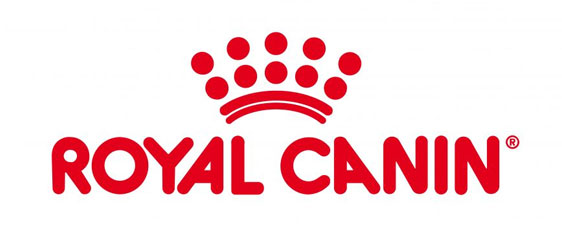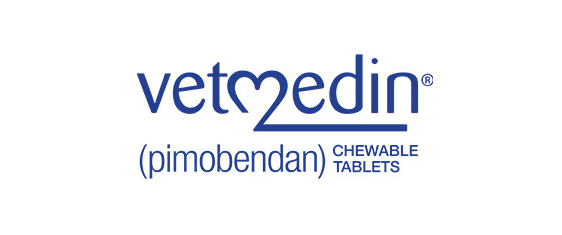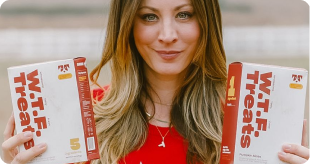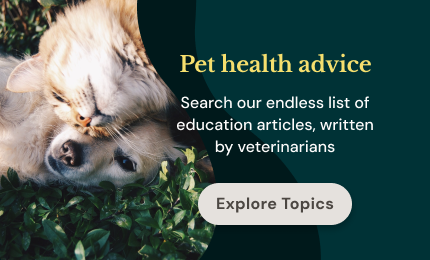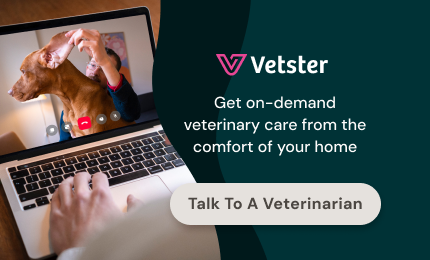Feeding Your Adult Dog or Cat
Doctor of Veterinary Medicine

While efforts are made to answer all questions as quickly as possible, if an immediate answer is required or if your pet is in need of urgent or emergency care, contact your pet's veterinarian immediately.
Doctor of Veterinary Medicine

You will receive an answer from Dr. Lindsay and our vet/tech team as soon as possible, usually the same day.
All answers are provided for informational or educational purposes only, and are intended to be a supplement to, and not a substitute for, the expertise and professional judgment of your pet's veterinarian.
It may be necessary to consult your pet's veterinarian regarding the applicability of any opinions or recommendations with respect to your pet's symptoms or medical condition.
CloseDoctor of Veterinary Medicine

An error has occurred, please reload the page and try again.
CloseWhile efforts are made to answer all questions as quickly as possible, if an immediate answer is required or if your pet is in need of urgent or emergency care, contact your pet's veterinarian immediately.
There is no answer related to your question
Most adult pets do better with two feedings a day. With only one meal a day, the stomach distends maximally, which makes it easier for the stomach to twist and bloat. Bloat is fatal in one out of three dogs that develops it. Feeding twice a day decreases the tendency to bloat.Feeding twice a day also makes it easier to keep your pet at the correct weight because you can offer smaller amounts and not make your pet accustomed to having his or her stomach distended. Visit our Weight Loss section for more advice on helping your pet maintain the proper weight.
It's also easier to give your pet medication if he or she learns to be fed twice a day. As your pet sits—hungry and eager to eat—pop the medication (wrapped in a delicious treat or Greenies Pill Pocket) into his or her mouth, then offer an even bigger piece of food to ensure your pet swallows the medication already in his or her mouth. Then, offer the meal.
- Provide high quality, nutritious pet food for a healthy adult dog or cat, twice a day.
- Dogs and cats should have a constant supply of fresh water.
- Cats do not drink as much as dogs because they evolved as desert animals, but more water drinking should be encouraged to prevent hairballs, constipation, and bladder stones.
Frequently asked questions about feeding dogs and cats
- How much water does my pet need?
- How much water does my dog need every day?
- What type of pet needs more water, a puppy or an adult dog? A kitten or a cat?
- How much water does my cat need every day?
- How can I get my cat to drink more?
- Why don't cats drink very much?
- How much water should my puppy have while being housebroken?
- How can I tell if my pet is dehydrated?
- What if my pet drinks from the toilet?
- How important is filtered water for pets?
- How long should my pet's food bowl be down?
- How many calories should my pet get every day?
- How can I tell if my pet is the right weight?
- How can I get my pet to accept new foods?
- My cat is a picky eater. What can I do?
- Why add digestive enzymes to each meal?
- Why does my pet get diarrhea if I change his or her food?
- Should I feed my pet vegetables?
- Is it ok to give my dog garlic?
- Is it ok to feed cat food to my dog?
- Can I feed table scraps to my pets?
- Why do pets eat grass?
Provide a constant supply of fresh water. For pets that prefer cold water, freeze water in a yogurt container and leave it in the dish to supply cool water all day. For pets that prefer running water, provide a drinking fountain with a pump.
Normal water consumption varies according to outside temperature, the degree of exercise, and the kidneys' ability to conserve water. Pets that are nursing, have diarrhea, or diseases like diabetes, need more water. Pets receiving dry food, rather than raw food or canned food, also need more water.
Some dogs consistently drink a lot, and others consistently don't drink much. As a pet owner, you want to be aware of any changes in water consumption. Let your veterinarian know if your pet is drinking more or less water than normal because a change in drinking habits is often the first signal your pet is ill.
The average dog drinks about 1/2 to 1 ounce per pound of water per day.
Ounce by ounce, puppies and kittens need more water than adult pets. A larger percentage of the young pet's body is water, and it is easier for a young pet to become dehydrated. A younger pet also has a proportionately larger surface area for its weight than an adult, and the larger the surface area, the faster the rate of dehydration.
Maintenance fluid is about 50-60ml/kg or 25-30 ml/lb. For an eight pound cat, that's about eight ounces (30 ml to an ounce). Some cats consistently drink a lot, and others consistently don't drink much. The important thing is to watch for a change in water consumption, and let your veterinarian know if this occurs.
Cats are able to survive without drinking much because they can concentrate their urine and not lose water through the kidneys and bladder. We measure the ability to concentrate urine by specific gravity. A cat's average urine specific gravity is 1.045, which is much more concentrated than that of dogs and people—1.015.
Unfortunately, highly concentrated urine can predispose cats to developing urinary stones and crystals. Help prevent stones and crystals by encouraging your cat to consume more fluids. It is often beneficial to feed canned or raw foods rather than dry foods to prevent crystals.
Some cats prefer their water flavored with a few drops of chicken or fish broth. Other cats want their water chilled, or they want it fresh and flowing in a drinking fountain. Many cats drink better if they have several bowls throughout the house. Some pets do best if they have a fish bowl to dip their paws into. Find what works best for your pet.
Cats evolved as desert animals and obtained water from prey rather than from standing ponds or puddles. Because of their evolution, many cats do not have a genetic inclination to drink much. These cats are healthier when fed fresh raw or canned cat food, which is more like prey, rather than being fed dry cat food. If your cat will only eat dry food, try supplementing it with a tablespoon of yogurt (plain, but not low fat—cats hate diet food), cooked rhubarb, sweet potato, pumpkin, or squash.
Cats that don't drink sufficiently can have problems with hairballs, constipation, and urinary stones.
During the housebreaking period, put the water bowl down for 15-20 minutes with each meal, and again in the evening about four hours before your pet's bedtime. If it's hot and your pet needs water between meals, put a couple of ice cubes in the bowl to gradually melt.
If your pet is physically unable to go for four hours without water, wait until he or she is more mature before housebreaking.
Two easy ways to assess hydration are to check the gums and pinch the skin. Gums should be moist; if they are tacky rather than moist, your pet is dehydrated. Pinch the skin; it should immediately fall back into its normal position. If the skin remains pinched (also called "tented"), your pet is dehydrated. Extremely dehydrated pets have dry gums, skin that remains tented for several seconds, and sunken eyes.
Pets that are not dehydrated produce between 10 and 20 ml of urine per pound per day. For a 10-pound pet, that's a minimum of about ½ cup of urine a day.
Treat your pet the same as you would a two-year-old child; close the toilet lid and keep your pet away from the toilet. Human feces can contain E. coli, salmonella, and other pathogens. Don't let your pet to share a bowl with these bacteria. In addition, toilet bowel refreshers contain chemicals that are potentially fatal for pets.
It is not whether water comes from the tap or from the store that makes it healthy. Tap water can be healthy or unhealthy. If the water is unhealthy and you don't drink it, your pets shouldn't either. Pets experience the same physical problems from unhealthy water as humans do. Many times it's worse for a pet than for humans because pets age so much faster. For example, a pet drinking unhealthy water until two years of age is the same as a human drinking unhealthy water for the first 14 years of life.
Leave the pet food bowl down for 15-20 minutes, then pick it up. Do this throughout the life of your pet, beginning when he or she is young, dogs and cats alike. Feeding only the amount your pet needs at a single meal keeps the food fresher and prevents the loss of essential nutrients through oxidation. Oxidation is normal, occurs in the presence of light and air, and decreases nutrients. Your pet needs these nutrients. You're paying for them so don't throw them away by keeping a bowl or feeder constantly full of food.
The number of calories your pet should receive varies, just as the number of calories you should have will vary. Hard exercise, extremes in temperature (either hot or cold), illness, pregnancy, nursing, and intestinal parasites alter how many calories a pet needs. As a rule of thumb, base how much you feed on how well your pet is doing. Pets that receive the right number of calories have plenty of energy, fight infections well, have a healthy coat, have ribs that can be easily felt, and pass normal stools every day. Puppies and kittens need 2-3 times more calories than adults of their breed. Nursing mothers may need four times the normal caloric intake.
You will note that the larger your pet is, the fewer calories per pound he or she needs, and the smaller your pet is, the more calories he or she needs per pound of body weight. This is true of all mammals and it is related to surface area. A smaller pet has a larger surface area for his or her weight than a large pet has. Surface area is significant because your pet loses heat or absorbs heat through the surface, and this influences his or her basal, or baseline, metabolism. Estimates of the number of calories your pet needs begins with his or her basal metabolism, then is adjusted according to exercise, illness, etc. Kittens and puppies have the largest surface area for their weight, and need more calories per pound than adult pets. In addition, kittens and puppies are often more active and burn calories faster than adults. A neutered pet needs 1/3 to 1/4 less food than an intact pet.
If you can feel you pet's ribs easily by sliding your hands under the hair, the weight is probably right. Dogs should have a waist, which is a thinner section at the flank as you look down upon them while they stand. If you can't see or feel the ribs, Visit our Weight Loss section for tips on how to help your pet lose weight, or consult your veterinarian.
Start when your pet young. Offer him or her small amounts of many different tastes and textures: sardines, yogurt, sweet potato, different kibbles. Don't leave food out between meals so your pet is eager to receive his or her next meal.
If you're converting an older pet to different foods, start small. Wait until your pet is hungry and offer a pea-sized amount of the new food and nothing else. Act cheerful and not worried. Wait several hours; if the food is not gone, remove it and feed your pet about half his or her regular meal so that he or she is not starving, but not full. Try again with the new food the next day. Do not starve your pet, but it is okay to let him or her be a little hungry to stimulate a wider appreciation of foods.
Some folks successfully convert their pets to eating new foods by mixing the new food with their pet's favorite food. Others put what they want their pet to eat on their own plate, pretend to eat it, and offer it to their pet.
- Feed kittens a variety of textures, temperatures, colors, odors, shapes.
- Don't grab your cat while he or she is eating and give medication. Your cat will associate eating with a bad experience.
- Don't mix medications into your cat's food. Put the medication in a separate bowl, and have it formulated with a flavor your cat likes. Or have it formulated to be rubbed into the skin (transdermal).
- Don't make sudden diet changes.
- Use two diets at the same time in case there is a problem with supply of one of them.
- Make changes gradually.
We recommend adding NaturVet Digestive Enzymes Plus Probiotic to each meal for dogs and cats. This product helps break down proteins, carbohydrates, and fat. It also provides beneficial bacteria to help populate your pet's intestines with ideal flora (bacteria). With the proper intestinal flora, your pet makes many of the nutrients he or she needs, including some of the B vitamins. NaturVet Digestive Enzymes Plus Probiotic is superior to many enzyme products because it doesn't contain milk sugar (lactose) as its primary ingredient.
There are three common reasons for diarrhea with food change:
- Your pet may be allergic to the new food. Pets can be allergic to a major component, such as beef, corn, or rice; and they can be allergic to minor components, such as yeast.
- Your pet's system needs to make a dramatic adjustment to accommodate the new food. Imagine the changes necessary when a car manufacturer converts a factory to produce a new model. Your pet needs to make equally significant changes in his or her intestinal factory when the diet is altered. You can help by making changes in your pet's diet gradually, over the course of a week or more.
- There is a marked increase in total calories with the new food.
Feeding vegetables can be a good idea. If you want your pet to have something to chew that is low-calorie, go ahead and give a few green beans, peas, or florets of broccoli. But only "a few!"
If you want your pet to get the antioxidants, vitamins, and minerals from vegetables, then grate, puree, or blenderize them. Our pets don't have large fermentation areas in their intestines to break down fibrous plants. Mechanically breaking down vegetables with a blender allows pets to benefit from the vegetable's nutrients.
So, provide vegetables, but offer them in reasonable amounts, and provide them warmed. Our dogs and cats evolved eating prey, which means they are genetically adapted to eating food that's about 100 degrees.
Small bits of garlic are fine, but large amounts are harmful. Moderation in all food matters is wise, but especially with a powerful food like garlic. Garlic and onion can cause hemolytic anemia in pets, but a small amount—a couple slices from a clove for a 50-pound dog two or three times a week is ok. Cats might have a thin slice once or twice a week. If you want to use garlic more often than that, check with your veterinarian who will ensure your pet's hemoglobin remains normal.
Garlic benefits pets by stimulating the immune system, and for some pets it helps repel fleas. A slice from a garlic clove is all that is needed. Raw garlic is more beneficial than processed garlic.
Cat food is not inherently bad for dogs, but it is not ideal for them either. Cat food is often higher in protein and fats than dog food, and the increased fat and calories can cause life-threatening pancreatitis. Dogs aren't like us; if we eat a rich meal with too many calories, we put on weight, but dogs consuming too many calories in a single meal can develop pancreatitis.
Some dogs seek out cat food because it is higher in nutrient value than their dog food. If your dog food is not supplying the nutrients your pet needs, and you don't want to change to a more nutritious pet food, add NaturVet Digestive Enzymes Plus Probiotic to make the nutrients in the food easier for your dog to absorb.
Pets can eat grass because they want the nutrients in growing plant, something in their stomach is upsetting them and the indigestible grass fiber can stimulate vomiting (thus riding them of the noxious material), or they are bored.
Dogs and cats evolved killing prey, including herbivores (or plant-eating animals), and eating the stomach contents of their prey. The stomachs contained partially digested grasses, so our pets have always been nourished by plant materials. Today, our pets aren't eating rabbits, sheep, or other herbivores, but they still benefit from grass. We can help by offering small amounts of grated, blended, or cooked vegetables with added enzymes. Enzymes replace the herbivore stomach enzymes that our pets evolved consuming. We recommend NaturVet Digestive Enzymes Plus Probiotic.
That depends upon what you call a scrap. A true scrap goes in the trash. Table food, though, can nourish your pet just as it nourishes you. Pets do best with no seasonings, no sauces, and no butter. Unlike humans, pets can be killed by a sudden change in the amount of fat or calories consumed. So, work with your holistic veterinarian if you want to feed table food. Start small: give half a sardine, a tablespoon of mashed sweet potatoes, and gradually increase the table food as you're gradually decreasing the kibble.
Often we eat better than our pets, especially if we are only providing them with dry pet food (kibble). Pets know this and want better food. It is not that kibble is bad, any more than a breakfast cereal is bad. It's just that it is not ideal to only feed kibble for your pet's lifetime. The benefit of kibble is that it contains a wide variety of ingredients and is balanced, but if you can provide a nutritionally balanced diet with the right number of calories for your pet, go right ahead. However, if you cannot figure out what your pet needs, don't switch to home-cooked meals, stay with kibble. The reality is that if you can feed yourself well, and you want to feed your pet well, you can learn how, and you can do an excellent job at it. It does not cost any more to prepare home-cooked food for your pet, but it does take more time.
The amount of food your pet requires will depend on his/her activity level, age, breed, and climate. Speak with your veterinarian to determine an ideal amount of food to feed your dog or cat.
 Swipe
Swipe









